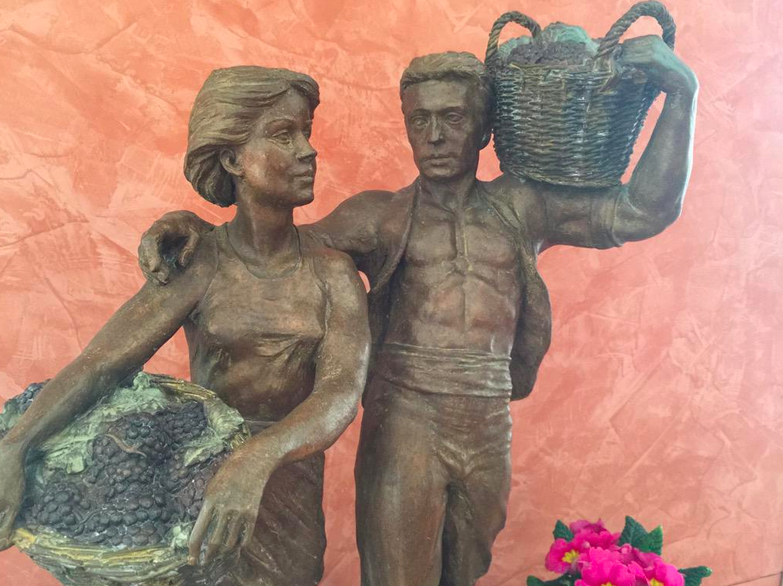by Wine Owners
Posted on 2015-05-27
So goes the good luck saying, advising what a bride might wear at her wedding to bring good fortune.
In reviewing Bordeaux 2014 releases to date what could be more appropriate? After all, this has been a campaign where a few enlightened producers got their winemaking and pricing aligned, whilst others (the majority?) have simply ignored the current compelling pricing of many of their back vintages of comparable quality.
In the light of that, what mixture of old and new vintages might the wine lover or collector consider?
SOMETHING OLD
Something old is symbolic of continuity.
When comparing the 2014s to broadly comparable back vintages, it reaffirms the value there is in wines around the 7-12 year old mark. In the majority of cases these are wines just hitting their stride, and in some cases with enormous drinking windows ahead of them.
Here are some examples but today Bordeaux unquestionably is generally favouring back vintages over new releases.
L’Eglise Clinet 2006
I just love L’Eglise Clinet, so I’m delighted to give it my first mention. Only, why buy 2014 when 2004, 2006 and 2008 are all cheaper? Personally I’d probably pay the market premium for the 2006, simply because that vintage is proving to be such a fine year in Pomerol. There is so much definition to the fruit, and such balance to the best wines. L’Eglise Clinet is an obvious choice due to winemaking of the highest order over the last decade.
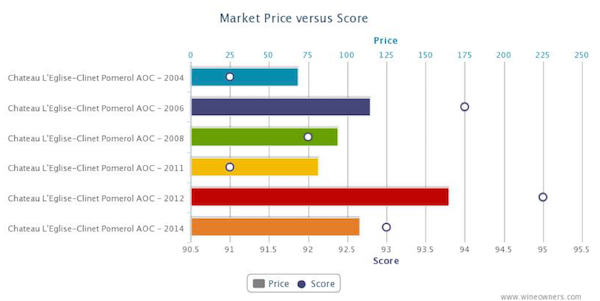
Haut Brion 2008
At around £2,400 per case, the 2008 makes a profoundly compelling case for itself, as does the 2012 in the light of its recent Parker rerating, reinforced by other reviewers such as Jeff Leve. Throw 2006 into the mix as a wine of exceptional purity, and there’s an embarasse de richesses for grown up lovers of Graves.
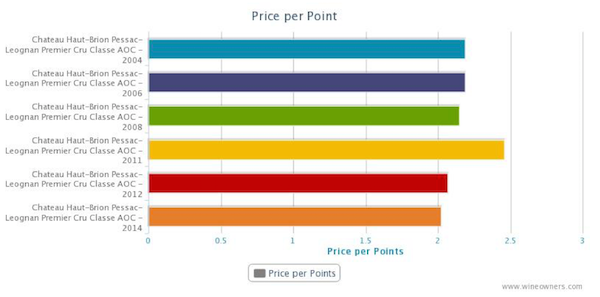
Palmer 2004
Leaving aside the fact that the beautiful 2014 is Palmer’s first vintage made entirely biodynamically, 2004 still stands out as a wine value that warrants the wine lover’s attention. According to Parker it’s a modern day version of Palmer’s brilliant 1966, majoring on elegance and precision, freshness and depth of flavor.
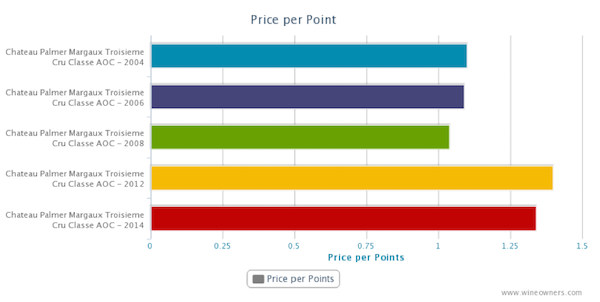
SOMETHING NEW
Represents good luck, success and hopes for a bright future.
Let’s start with a handful of winners. Using the soon to be released price per points analysis feature on Wine Owners highlights value in the context of broadly comparable quality. The teetering Euro helped, creating a rare opportunity for Châteaux to please the market and satisfy their accountants. A handful grasped the opportunity.
Le Petit Mouton 2014
Growing positive sentiment in respect of the quality of the last decade’s vintages has given those years a recent helping hand. This is the cheapest vintage in the market at £375, and a 40% discount to its possible qualitative equal – 2006. Different too. The success of Merlot on gravel relegated a big slug of Cabernet to the second wine, so atypically cabernet-dominated and correspondingly serious.
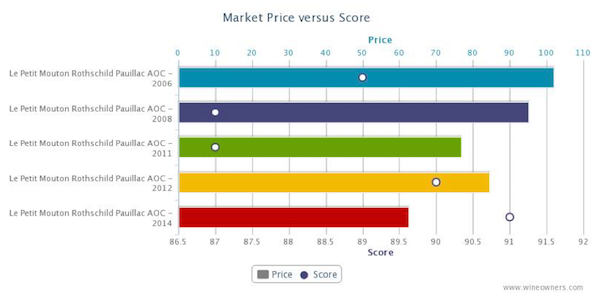
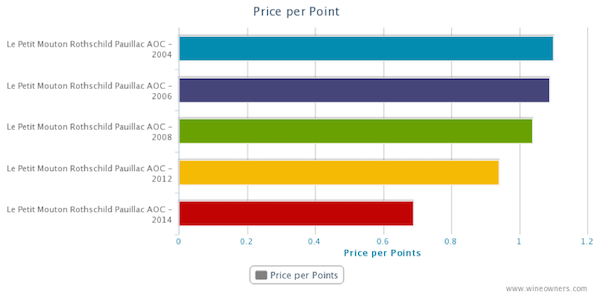
Mouton Rothschild 2014
Outstanding in a vintage in which Pauillac starred. There’s a breezy balance whilst its Merlot genes and dash of Cabernet Franc complete a raspberry-driven, fresh, complex palate with plenty of fine-grained tannins. They got the price right as the charts show.
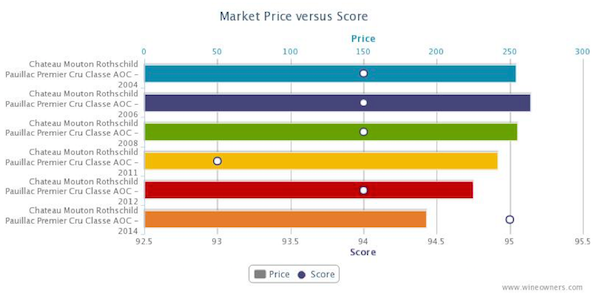
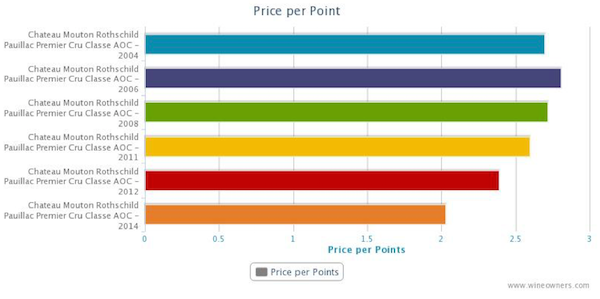
Lynch Bages 2014
Poised, with classic Pauillac character; loaded with griottes fruit and flowing Saville Row lines. It was priced to within a hairs-breadth of 2011 and 2012 current market value but the value difference over 2008 and 2006 must have convinced loyal buyers to part with their money early as merchants reported healthy demand.

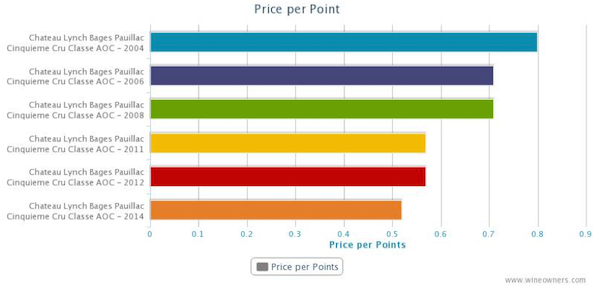
Lafite 2014
We didn’t think Lafite was the most immediately impressive First Growth in 2014. In fact it seemed to be the most obdurate. Yet the critics lapped it up, and we’re more than happy to defer to their better judgement. In the meantime one thing is very, very obvious looking at the price per points analysis. It’s priced as a come-on to consumers to open their pocket books and buy early.
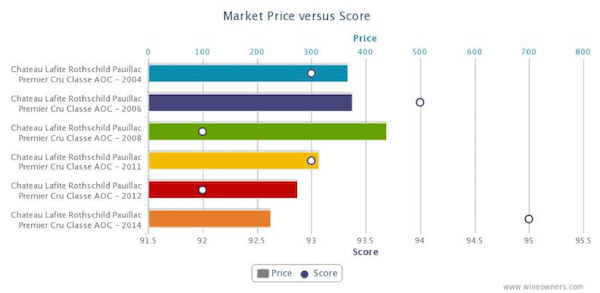
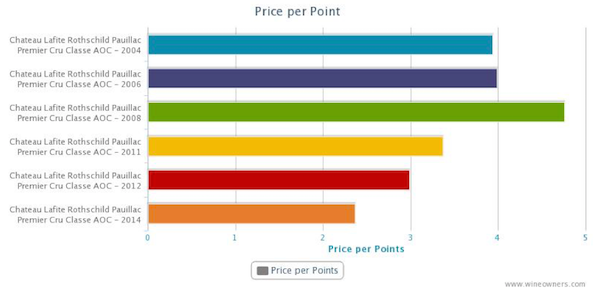
SOMETHING BORROWED
Anything can be borrowed but it must be returned afterwards.
A couple of worrying features of the 2014 campaign have emerged.
The first is linkage. Back in 2010 Bordeaux chose to tie certain wines with others. The most interesting example was a pack of Rieussec linked to a pack of Carruades. Interesting because of the distorting factor it had on the market for Rieussec. Back then, merchants simply added a couple of hundred pounds to the price of their Carruades allocation before dumping Rieussec onto Livex and selling through at £210-£220 per 12; roughly half the retail release price offered to consumers. To this day those Livex members who jumped in and hoovered up stock are sitting on the best returns that the 2010 vintage had to offer. Not great for the consumer who bought Carruades but a creative market response to price manipulation.
Linkage is seemingly back, with Rieussec once again tied to Carruades, according to one or two merchants we talked to. Who’s doing the tying is a question to which I have no answer, and this time the merchants can’t just transfer pricing from one wine (relatively difficult to sell at first release) to another (for which there was unquenchable demand back in 2010).
The second feature is limited quantities released by some Châteaux. Who’d have thought the Bordelais would have de facto discouraged early purchases in 2014 – maybe they don’t believe in the en primeur system after all? Like a boyfriend who isn’t in love anymore, but is too insecure to let his partner go.
Calon-Ségur is a wine I thought showed delightfully in 2014. The vibe among négociants in Bordeaux was positive, lending emotional support to the wine even before release.
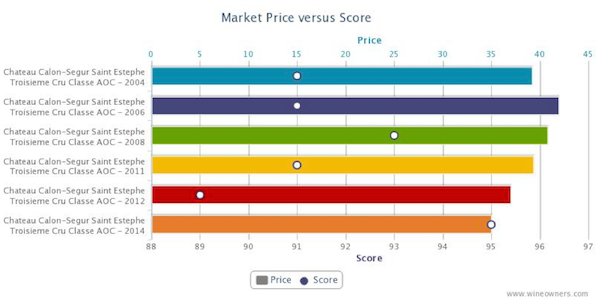
Recently acquired by Suravenir Assurance, an insurance company for whom no doubt a higher average release price per bottle will help to sûr-value their estate on a forward-looking basis, chose to release up but at a realistic price point for the fine quality. But then the real game plan became apparent. There was no wine: merchants who had assumed they were in line for a reasonable allocation (and had promised private clients allocations on that basis) found that they were empty handed. Merchants were left scurrying around for whatever they could pick up. Consumers were left feeling that however big Calon’s heart, maybe it was losing its soul.
This is the sort of attempt at market influence that Bordeaux EP does not need. Frankly, if Châteaux would prefer to achieve a higher price than the market can bear, then why not exit EP as Latour did, and release when the wine is considered ready? It’s dishonest to play it both ways and the market will not necessarily reward throttled supply with higher prices: demand is often chocked off too in the process.
SOMETHING BLUE
The symbol of faithfulness, purity and loyalty.
There are so many Châteaux that we could have used to exemplify the question of whether we would have chosen to buy early, or wait a few years until the young wines are fully formed, or go back to earlier vintages where there’s so much value to be had. In most (but by no means all) cases we’d go back to earlier vintages and wait to buy the new releases in bottle. But buying young wine isn’t an entirely rational decision as we all know.
Which vintages would you buy on the basis of the following charts? You decide!
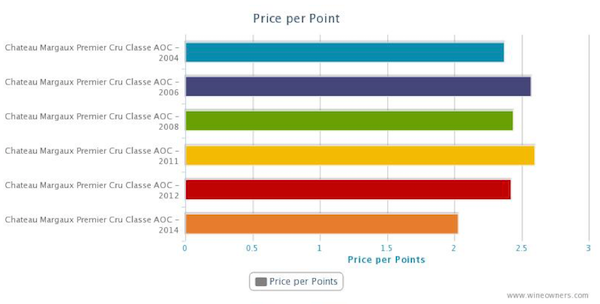

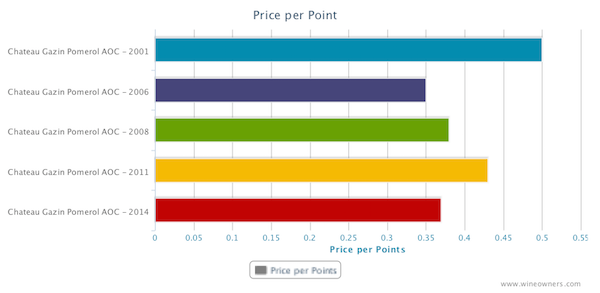
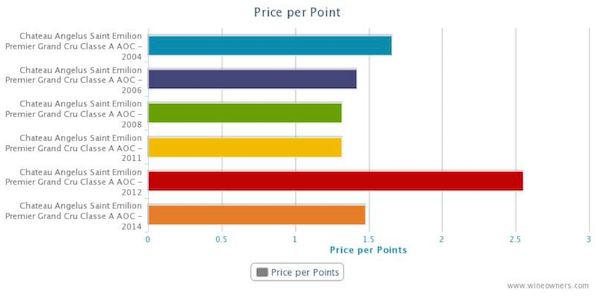
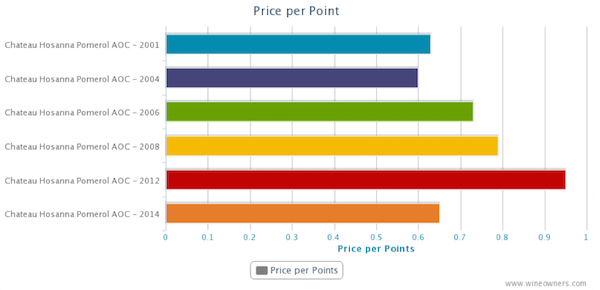
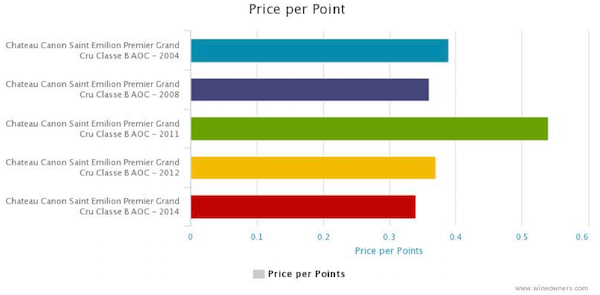
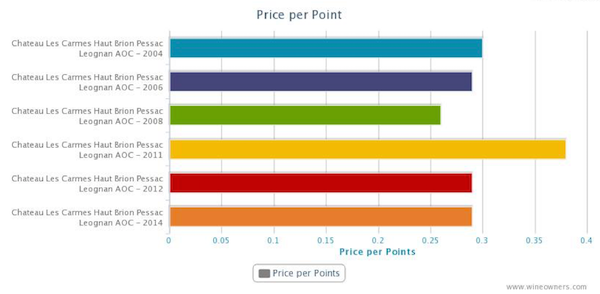
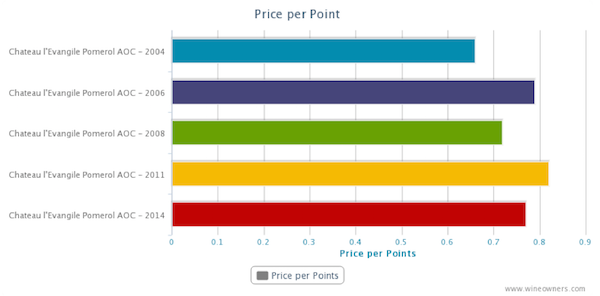
by Wine Owners
Posted on 2015-05-27
We’re busy road testing the new price per points analysis (PPP) function on Wine Owners, designed to highlight comparative value. Together with comparative charting, the two functions are arguably the most powerful combination of analytical tools available to the fine wine buyer and collector. We thought it would be interesting to use PPP to evaluate the new releases from Bordeaux. Here are copies of some of our tweets that tell their own story.
Not following us on Twitter yet? You should! It’s the perfect way to receive just-in-time information to inform your fine wine decisions.
We’re @WineOwners1.
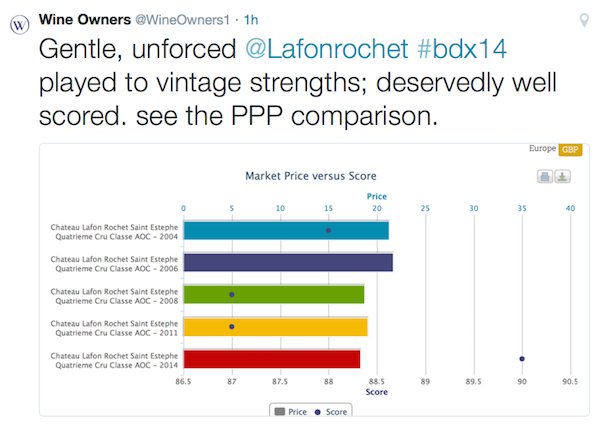
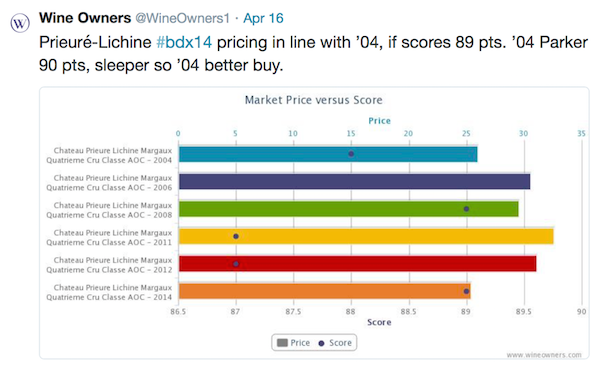
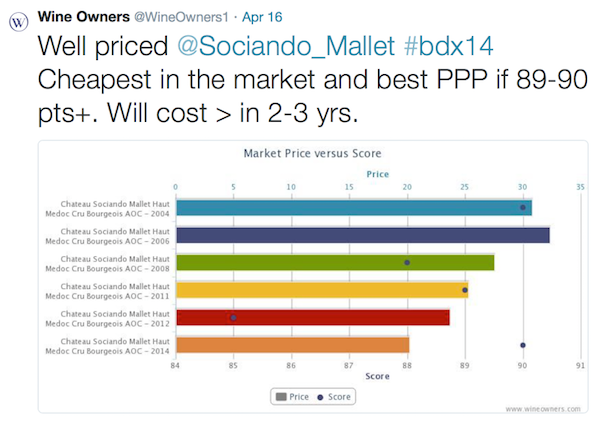
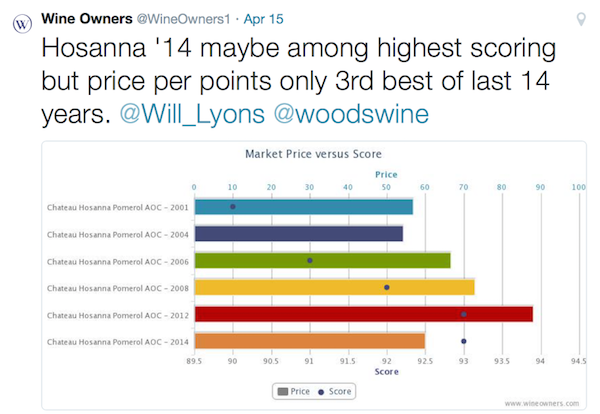
by Wine Owners
Posted on 2015-05-27
What will it take for consumers to buy 2014 en primeur? The vintage produced many very good wines, but it isn’t another vintage of the century. Whilst it is a vintage that is qualitatively superior to any of the preceding years 2011-2013, the wines are heterogeneous; it is therefore a vintage to buy selectively.
Many producers were not keen to compare 2014 to 2008, which does nonetheless seem to be its closest benchmark if one had to only select one vintage. There is freshness across the board, and when combined with the vintage’s inherent fruitiness, has resulted in many appetising wines with substance and character.
Some, such as Chateau Latour, did compare 2014 outright with 2008, and perhaps it’s little coincidence that they do not need to sell this vintage, given their withdrawal from the en primeur release schedule. Others pointed to the pretty, succulent nature of the vintage (at its best), reminiscent of 1983 crossed with the structure of 2008.
Looking at it purely from the consumer’s perspective, they are most likely to buy if this vintage is priced to a discount of around 20% versus current low market 2008/ 2006 prices. Here’s why:
1/ There are only two reasons to buy early: scarcity and price. Since scarcity is merely a relative term in Bordeaux where quantities produced are generally substantial, that leaves price.
2/ The consumer has traditionally played the role of stockholder for en primeur releases. There is no reason to assume the risk of tying money up early, losing its opportunity cost, and incurring storage charges unless there’s a strong financial reason to buy up front.
3/ 2014 is qualitatively at least as good as 2008 or 2006. Pricing en primeur using the last vintage as a benchmark is meaningless. Producers want to price the current vintage to a meaningful premium over the very poor 2013s, because it is much better. Merchants want the Bordelais to price to the same price as 2013 to win back confidence. Neither side is focusing on the correct data.
Much more meaningful is comparing to current market prices of vintages that are qualitative benchmarks, hence picking 2008 and 2006 best market prices as the basis for showing what consumers need to spend for a comparable level of quality.
So using Wine Owners’ Market Level pricing data for First Growths and our favourite wines this year, we’ve calculated, based on a 20% discount to current or recent best market prices for 2008 and 2006, what we think consumers should be paying in £ sterling for a 12x75cl In Bond case of 2014 en primeur.
Because prices fluctuate, we’ve taken market pricing from 3 months’ ago and also from this month’s market pricing of 2008 and 2006 vintages, and have taken the highest average of the two vintages sampled from 3 months’ ago and this month.
Based on this analysis we’ve calculated suggested £ sterling prices to consumers, inclusive of margins taken by the whole channel of distribution including merchants. These suggested 2014 en primeur prices sample only the First Growths and those wines tasted that we liked the most.

Related articles:
2014 Bordeaux – The Vintage
Post Parker Primeurs
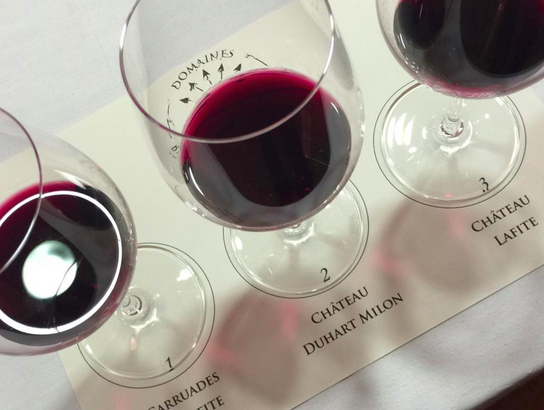
by Wine Owners
Posted on 2015-05-22
There are some beautiful wines in 2014, a vintage that (at it’s best) is qualitatively superior to any of the preceding years 2011-2013. On the other hand, it is not a 2000, 2005 or 2010. The vintage is heterogeneous; it is not therefore not recommended to buy broadly, and demands research into the best wines.
Most successful will be those producers who didn’t over extract. At Calon Ségur they summed it up with ‘everything had to be soft this year’ (to make great wine). Those who tried hard to push the possibilities from the available grape must will have run the risk of having made unlovely wines.
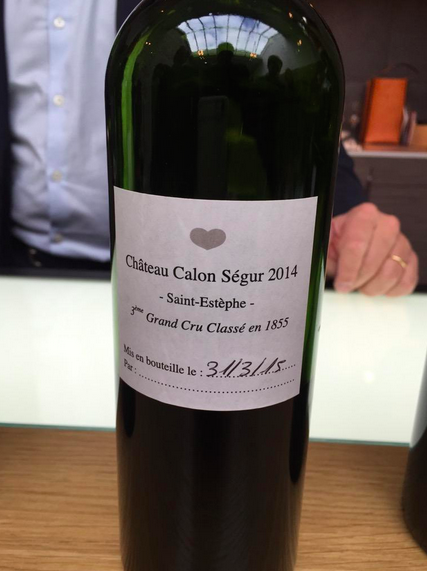
In Pessac-Leognan and the Libournais, in those cases where wines were rather more extracted, it seems to have resulted in sharp wines with bitter, tinged-green tannins. According to one producer this is due to the phenolic maturity of the grape pips. Consequently these were my least favourite sub-regions this year. In the blue-chip appellations of the Medoc peninsular, the wines were more homogeneous (with the exception of the generally unpleasant Haut Medocs), and in the communes of St. Julien, Pauillac and St. Estephe the year was a success.
At its best it will be a fine, classic vintage of wines that will give medium+ term pleasure. At its worst there will be wines that are angular, sharp and of questionable balance.
Many producers were not keen to compare 2014 to 2008, which does seem to be its closest benchmark if one had to only select one vintage. There is freshness across the board, and when combined with the vintage’s juicy fruit, has created appetising wines with substance and character.
Some, such as Chateau Latour, did compare 2014 outright with 2008, and perhaps it’s little coincidence that they do not need to sell this vintage, given their withdrawal from the en primeur release schedule. Others pointed to the pretty, succulent nature of the vintage (at its best), reminiscent of 1983 crossed with the structure of 2008.
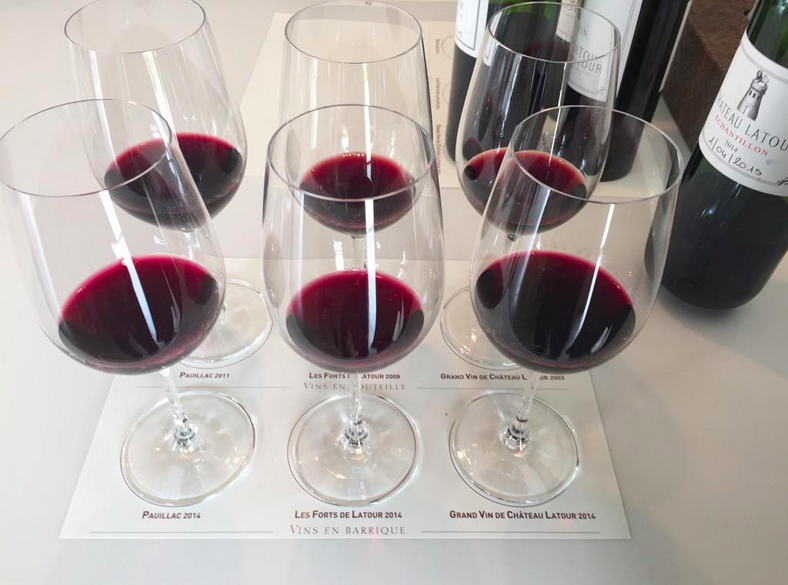
This was a late vintage, the summer was dreadful but the autumn was dry and sunny; a perfect Indian summer allowing producers to pick more or less at their leisure. There’s a saying that ‘ Août fait Le Moût ‘ (literally August makes the must – meaning the quality of a wine is forged by the August sun). This is typically when véraison takes place (the period during which the colour of the grapes change to their harvest colour). That wasn’t the case this year: the summer was poor and August cold. The prolonged, sunny autumn of much warmer than average days and cool nights made up a good chunk of that phenolic maturity gap, but did it completely totally compensate? Not entirely across the board it seems.
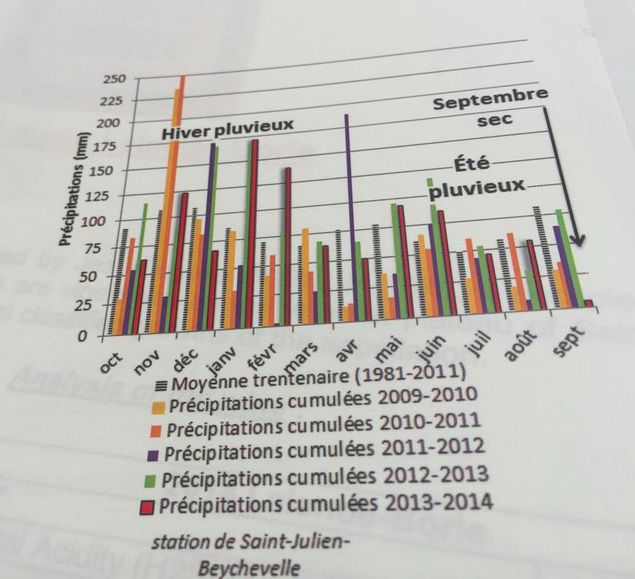
Two grape varieties that seem to have outperformed this year were Cabernet Franc and Petit Verdot. These varieties appear to exert disproportionate influence over the character and complexity of wines in 2014, belying the small proportions they generally contribute to Bordeaux blends. Conditions in 2014 enabled both these varieties to be picked at optimal maturity, subject to the soil composition on which they are sited.
If the Chateaux price to within a few percent of their 2013 releases, it is expected that the better wines will sell en primeur in April or May due to the weakened euro, especially versus the dollar.
Looking at it differently, consumers are most likely to buy if this vintage is priced to a discount of around 20% versus current low market 2008 prices. Here’s why:
There are only two reasons to buy early: scarcity and price. Since scarcity is merely a relative term in Bordeaux where quantities produced are generally vast, that leaves price. The consumer has traditionally played the role of stockholder for en primeur releases. There is no reason to assume the risk of tying money up early, losing its opportunity cost, and incurring storage charges unless there’s a strong financial reason to buy up front. That traditional purchase proposition is compounded by the losses consumers are sitting on in respect of the 2009 and 2010 vintages and certain 2006s.
If producers push the price increases further, ignoring the personal and behavioural economic reasons why consumers buy (because it’s a better vintage than 2011-13) there will be even less reason to buy these wines early. And that will be have been an opportunity missed to positively influence sentiment towards Bordeaux.
Nick Martin
